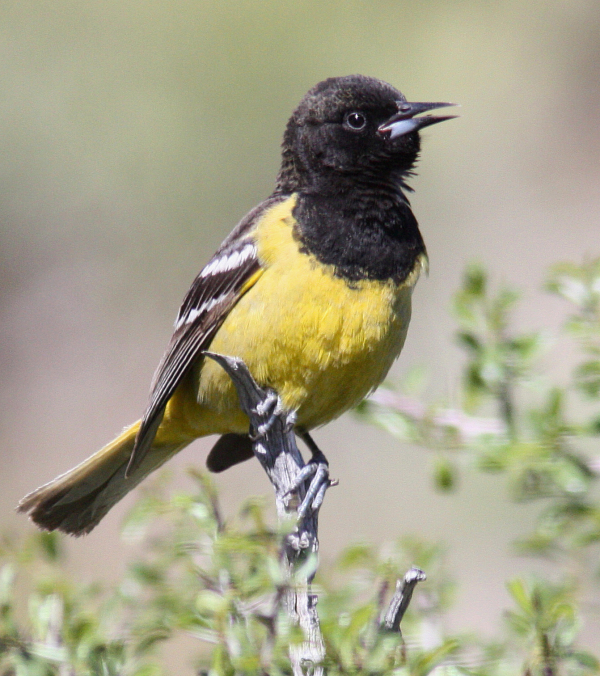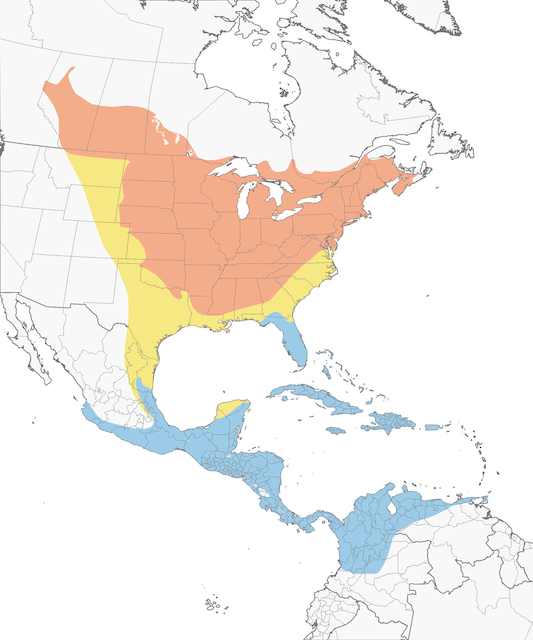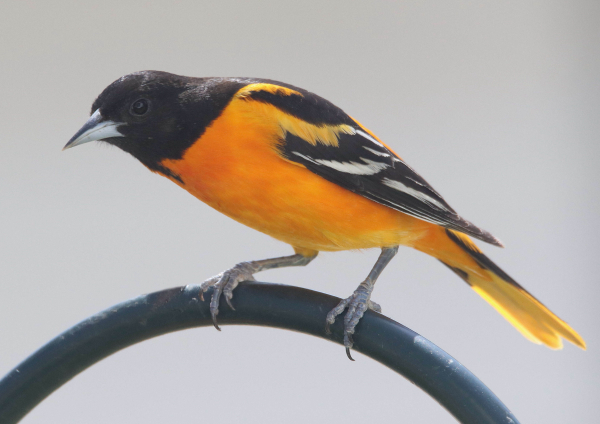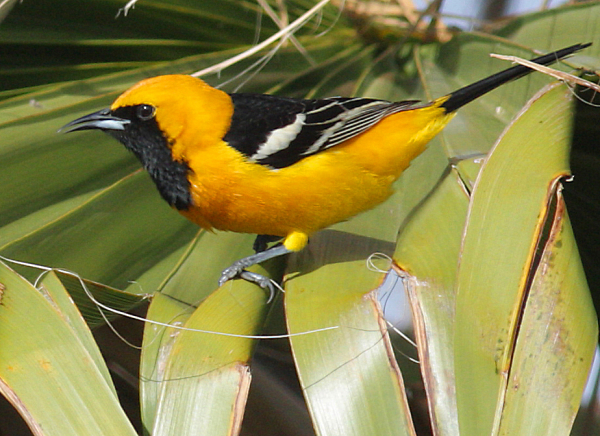
You can learn more about all the birds you see, and others that may interest you, including this Scott’s Oriole, at All About Birds (photos by Paul Konrad).

Range maps are particularly helpful to see the big picture of where a given species nests and “winters.” This range map for Baltimore Orioles is available with an abundance of information about the species at All About Birds.

Although almost everyone can identify a male Baltimore Oriole, females and young males show a lot of variety in their coloration. There are also a lot of interesting things to learn about their behavior and natural history, which is true for all species of birds we encounter.

A nesting species from California to southern Texas, Hooded Orioles also nest in regions of Mexico where almost all Hooded Orioles spend the “off season.”
|
August marks the period when some of the birds we have enjoyed since May suddenly vanish without a hint they were about to leave. Case in point, the orioles, but it extends to a variety of other birds – some thrushes, swallows, and more. The first question that comes to mind about each species is usually: “Where did that bird go? Or better yet, what is its migration route, and where will it spend the fall, winter, and early spring? Every birder is interested in learning more about the birds that visit our yard, feeders, and neighborhood, and each species’ story is different.
For example, do you know where the orioles that visit your feeding station spend the fall and winter months? Let’s start with Baltimore Orioles and Bullock’s Orioles, the east-west counterparts of the North American orioles. But are they really even North American birds? Well, to begin with, they spend most of the year south of the border of the United States.
Eastern Orioles: Baltimore Orioles winter from central Mexico south to central Colombia, plus the Caribbean Islands, and some even winter in Florida. Where do you suppose the Baltimore Orioles you have seen this spring and summer spend most of their year? Panama perhaps? Your guess is as good as ours. Continuing with the oriole theme, Orchard Orioles migrate south to a Latin American post-nesting range that covers a similar area as Baltimore Orioles – from coastal and southern Mexico to central Colombia, but they don’t range into the Caribbean or Florida during the “off season.”
Western Orioles: Bullock’s Orioles winter from central Mexico to southern Guatemala, so there is an excellent chance that Bullock’s Orioles you see spend most of their year in Mexico. Hooded Orioles prefer a Mexican wintering range too. Scott’s Orioles prefer drier habitats, so they tend to migrate to central Mexico or the southern half of Baja, where they bolster resident populations of Scott’s Orioles.
Learning about where orioles that nest in the United States and southern Canada – perhaps in your neighborhood – spend the non-nesting months of the year is especially interesting, and we encourage you to learn more about these birds and others that spend time in your yard and state, but disappear from sight for most of the year. After you read about orioles, look into the hummingbirds you are providing nectar for, or the warblers that pass through during fall and spring migrations.
You can learn about American species at All About Birds at Baltimore Oriole Overview, All About Birds, Cornell Lab of Ornithology and Bullock's Oriole Overview, All About Birds, Cornell Lab of Ornithology and Orchard Oriole Overview, All About Birds, Cornell Lab of Ornithology. Provided by the Cornell Lab of Ornithology, this extensive website is an excellent go-to source to learn about any birds found in the United States and Canada – and you can easily refer to their range maps, see photos of the birds, and hear recordings of their songs or calls along with a variety of interesting information.
It has been great to have orioles back for the nesting season, and their absence will be felt for months ahead, but other birds will take their place in our yards and neighborhoods week by week, so stay aware and enjoy the changes that each month brings.
Share your backyard birding experiences and photographs with The Birding Wire at editorstbw2@gmail.com